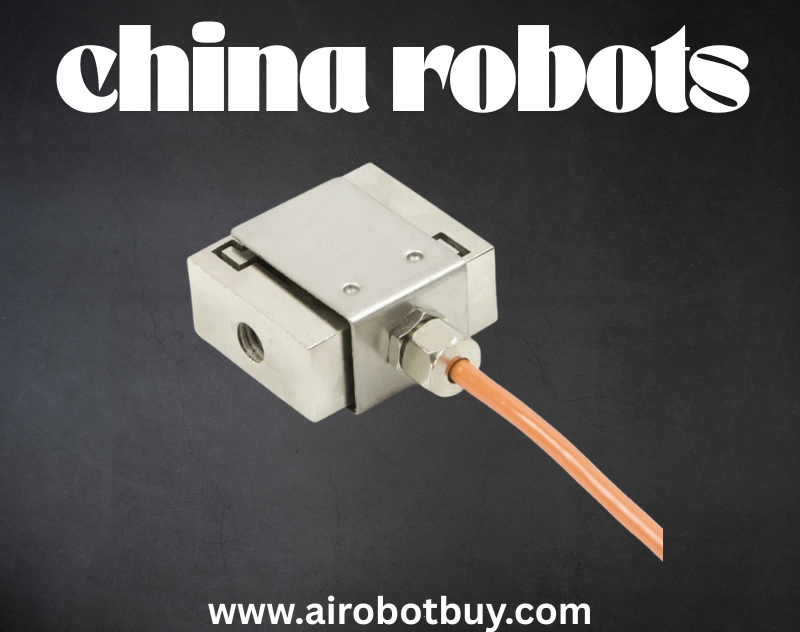Over the past decade, China robot has emerged as a global powerhouse in robotics — not just as a user of automation, but as a builder, innovator, and exporter of robotic technology. As the traditional advantages of cheap labor and large workforce begin to fade due to rising wages and demographic shifts, China is strategically turning to robotics to future-proof its economy. With strong government support, massive R&D investment, and a thriving ecosystem of local manufacturers, the country is rapidly automating its industries and scaling up intelligent manufacturing.
From high-speed industrial robots on car assembly lines to smart service robots in hospitals, hotels, and logistics centers, China is deploying automation across virtually every sector. At the same time, it’s closing the gap in core technologies and beginning to shape global robotics standards and pricing.
This transformation isn’t just about economic efficiency — it’s about China reshaping its role in global supply chains and setting a new model for tech-driven industrial growth. Whether you’re watching from a business, policy, or technology perspective, China robot surge is impossible to ignore.
In this guide, we will explain how China robot-driven revolution is unfolding, who’s driving it, where it’s heading, and what it means for the rest of the world.
China Robot Powering the Future of Global Innovation and Manufacturing

China is rapidly becoming a dominant force in the global robotics industry, leveraging advanced automation technologies to enhance its manufacturing strength and economic competitiveness. As traditional advantages like cheap labor decline due to demographic shifts and rising wages, China robot has responded with aggressive investment in robotics and smart manufacturing. The result is a strategic transformation that is not only reshaping China’s economy but also impacting global supply chains, innovation standards, and industrial practices. Visit here!
Government Support: Policy as a Catalyst
China robot surge is not accidental; it is policy-driven. The government has been central to creating a roadmap for the development and deployment of robotics through a series of initiatives:
- Made in China 2025: Launched in 2015, this national strategy prioritizes advanced manufacturing, including robotics, to reduce reliance on foreign technology.
- 14th Five-Year Plan: Highlights intelligent manufacturing and encourages the adoption of automation across various sectors.
- National Robotics Development Plan: Introduced specific targets for industrial robot production, robot density, and technological innovation.
This sustained top-down support has attracted investment, accelerated R&D, and incentivized manufacturers to integrate robotics into production.
Rise of Domestic Robotics Manufacturers
China’s strategy isn’t just about using robots—it’s about building them. The country has fostered a fast-growing ecosystem of robotics manufacturers:
- Key Players: Companies like SIASUN, ESTUN, Efort, and HIT Robot Group are producing a wide range of industrial and service robots.
- Market Share: Over 70% of robots installed in China are now made domestically, a significant rise from just a decade ago.
- Innovation Hubs: Regions like Shenzhen, Suzhou, and Dongguan have become clusters of robotics innovation, supported by local governments and research institutions.
Domestic production has also helped reduce costs, improve supply chain stability, and boost exports of Chinese-made robots to global markets.
Applications Across Multiple Sectors
China robot are being deployed in virtually every major sector. This widespread adoption is driving productivity, reducing labor reliance, and improving consistency.
Key Sectors Using Robotics in China:
| Sector | Use Cases |
|---|---|
| Manufacturing | Welding, assembly, packaging, inspection |
| Logistics & E-Commerce | Parcel sorting, automated warehousing |
| Healthcare | Surgery assistance, eldercare, disinfection |
| Agriculture | Crop monitoring, smart harvesting |
| Retail & Services | Robot waiters, security bots, hotel check-in |
Each application enhances efficiency and enables businesses to scale operations while maintaining quality and reducing labor risks.
Robot Density and Global Ranking
Robot density—the number of robots per 10,000 workers—is a crucial metric for measuring automation. China robot density has grown dramatically:
- 2015: 49 robots per 10,000 workers (below global average)
- 2020: 187 robots per 10,000 workers
- 2022: 322 robots per 10,000 workers (surpassing U.S.)
| Year | Robot Density (China) | Global Rank |
| 2015 | 49 | 25th |
| 2020 | 187 | 9th |
| 2022 | 322 | 2nd (after South Korea) |
This rise illustrates how fast China is integrating robotics into its workforce, closing the gap with the most advanced economies.
Benefits of China Robotc Revolution

China’s aggressive robotics strategy is yielding multiple tangible benefits:
- Increased Productivity: Automated systems can operate 24/7 with minimal downtime.
- Higher Precision: Robots reduce human error in assembly and inspection.
- Labor Cost Reduction: Automation offsets rising wages.
- Scalability: Smart factories can adapt to high-volume orders quickly.
- Export Competitiveness: Lower production costs help China maintain its edge.
These outcomes not only support domestic growth but also enable Chinese manufacturers to stay competitive globally.
Challenges China Faces in Robotics Expansion
Despite rapid progress, several challenges still need to be addressed:
- Core Component Dependency: China still relies on imports for precision parts like servo motors and reducers.
- Talent Shortage: There is a gap in skilled workers for robot programming, maintenance, and AI integration.
- SME Access: Small and mid-sized factories struggle with the high upfront cost of robotic systems.
- Tech Gaps: High-end robots for complex tasks are still dominated by Japanese, German, and American firms.
The government is actively funding local component development and technical training programs to close these gaps.
Future Trends in China Robot Sector
China robot evolution is far from over. Several trends are shaping its next phase:
- AI Integration: Combining robotics with artificial intelligence for smart decision-making.
- Collaborative Robots (Cobots): Designed to work safely alongside humans, ideal for SMEs.
- Service Robots Growth: From delivery drones to cleaning bots, non-industrial robotics is booming.
- Global Expansion: Chinese robot makers are entering emerging markets with cost-effective solutions.
These trends ensure that China remains a key innovator in both industrial and service robotics.
Global Impact and Influence
China’s rise in robotics is altering global dynamics in several ways:
- Lower Costs Worldwide: Chinese robot production is pushing down prices globally.
- Competitive Pressure: Other nations are accelerating automation to stay relevant.
- Supply Chain Evolution: More automated factories are reshoring or near-shoring production.
- Standard Setting: China is contributing to global standards and protocols in robotics.
China is not just catching up; it’s helping redefine how robots are used, priced, and regulated worldwide.
Q&A Section
Q1: Why did China invest so heavily in robotics?
A1: Due to rising labor costs and a shrinking workforce, China needed to boost productivity through automation to remain competitive in global manufacturing.
Q2: Is China manufacturing its own robots?
A2: Yes, China has rapidly grown its domestic robotics industry, with local firms now supplying over 70% of robots used within the country.
Q3: Which sectors are leading robot adoption in China?
A3: Manufacturing, logistics, healthcare, and retail are leading the way in robotic applications.
Q4: What makes China robot strategy unique?
A4: Its combination of policy support, domestic production, and massive deployment scale gives China a unique edge.
Q5: Can China become the global leader in robotics?
A5: If current trends continue and challenges are addressed, China is on track to lead both in robot manufacturing and implementation globally.

Conclusion
China robot rapid advancement in robotics is more than just a technological shift — it’s a strategic overhaul of how the country builds, competes, and grows in a modern global economy. What began as a response to labor shortages and rising costs has evolved into a national movement to lead the world in automation and smart manufacturing. Through a powerful mix of government policy, domestic innovation, and large-scale adoption, China robot has built one of the most dynamic robotics ecosystems on the planet.
From industrial robots on factory floors to AI-powered service robots in hospitals and logistics centers, the impact is clear: higher productivity, reduced reliance on labor, better product quality, and increased competitiveness in export markets. While challenges remain — especially in core components and workforce skills — China’s momentum is strong, and its long-term vision is taking shape.
As the rest of the world watches and responds, it’s increasingly clear that robotics will define the next era of global manufacturing — and China is positioning itself at the front of that transformation.


















